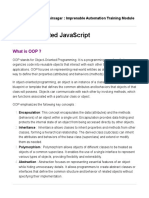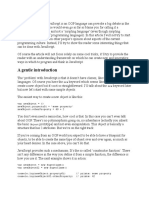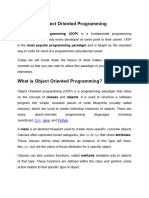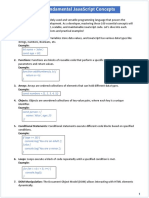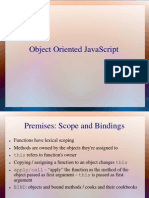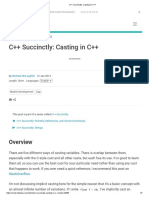0% found this document useful (0 votes)
27 views15 pagesChapter 3
The document provides an overview of Object-Oriented Programming (OOP) concepts in Java and JavaScript, including classes, objects, inheritance, encapsulation, polymorphism, and asynchronous programming. It explains the structure and syntax for creating classes and objects, as well as methods for handling asynchronous operations like callbacks, promises, and the Fetch API. Additionally, it covers WebSockets for real-time communication and event handling through callback functions.
Uploaded by
codewithrohan9834Copyright
© © All Rights Reserved
We take content rights seriously. If you suspect this is your content, claim it here.
Available Formats
Download as DOCX, PDF, TXT or read online on Scribd
0% found this document useful (0 votes)
27 views15 pagesChapter 3
The document provides an overview of Object-Oriented Programming (OOP) concepts in Java and JavaScript, including classes, objects, inheritance, encapsulation, polymorphism, and asynchronous programming. It explains the structure and syntax for creating classes and objects, as well as methods for handling asynchronous operations like callbacks, promises, and the Fetch API. Additionally, it covers WebSockets for real-time communication and event handling through callback functions.
Uploaded by
codewithrohan9834Copyright
© © All Rights Reserved
We take content rights seriously. If you suspect this is your content, claim it here.
Available Formats
Download as DOCX, PDF, TXT or read online on Scribd
/ 15





